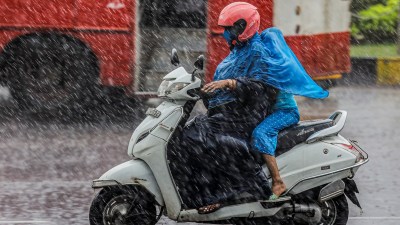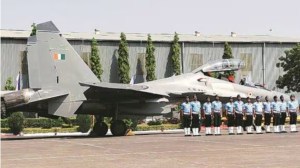A deadly new direction
Militancy in Kashmir has taken a new and deadlier turn, with militants upgrading their arsenal and attacking soft targets, reports ARUN SH...

Militancy in Kashmir has taken a new and deadlier turn, with militants upgrading their arsenal and attacking soft targets, reports ARUN SHARMA
First, there was the AK-47. Today, mortar bombs, rockets, missiles and the suicide bomber cap a decade of militancy in Jammu and Kashmir. Over the last three years, militancy in the state has evolved from a low-intensity proxy war into a full-fledged attack on the camps of security forces.
Significantly, this has been despite the Centre and the state government crying themselves hoarse about a considerable improvement in security in the State, especially after the installation of an elected government in 1996. The Union Home Minister L K Advani even declared that the situation in Jammu and Kashmir did not warrant the imposition of President’s rule, much to the surprise of his own party leaders in the state.
However, the recent attack by a suicide bomber who rammed an explosive laden vehicle into the gate of the Badami Bagh Cantonment in Srinagar, coupled with the unearthing of arms and ammunition dumps in the border districts of Rajouri and Poonch, speak volumes for the new dimension that militancy is assuming. This is at a time when security forces are already battling attacks by fidayeens on their camps.
Security forces officials point out that of late, the militants have been making concerted efforts to operate in a more organised manner. The recent arms haul is indicative of the militants’ changed strategy to operate in strength, a senior security forces official said.
This change is a postscript to the Kargil conflict. In the past, militants would directly attack security forces; now, they are targeting their camps. Security forces officials attribute this to the growing frustration among militant ranks after Pakistan’s defeat in Kargil.
The militants are also reaching out to other areas in the state: after stepping up activity in Rajouri and Poonch, they have started sneaking into the state through the International Border in the otherwise peaceful Jammu and Kathua districts.
A senior Border Security Force (BSF) official said that Pakistan’s Inter-Services Intelligence (ISI) has set up several “launching pads” near the International Border to push in armed militants into the state. It serves the twin purpose of keeping the International Border issue alive as well as diverting the attention of security forces deployed in battling militancy elsewhere, he added.
The International Border is also easier to cross as compared to the Line of Control (LoC). Moreover, infiltration through the International Border is possible throughout the year; whereas the mountainous passes at the LoC get blocked by heavy snowfall during winter. And once the militants have bypassed the BSF troops along the International Border in Jammu or Kathua, there is virtually no resistance due to inadequate deployment of security forces in depth areas en route to Udhampur and Doda districts.
Sources held up the recent encounters between militants and security forces in Chila Danga area (Samba) as an example: the militants had managed to sneak deep into Jammu district and would have managed to cross over to adjoining Udhampur had the local Village Defence Committee (VDC) members not detected their footprints and a half burnt Pakistani cigarette in the forest. It was their tip-off that helped the security forces cordon off the militants.
Two years ago, security forces had changed the air corridor in Rajouri and Poonch districts following the recovery of weapons capable of hitting a low flying helicopter. The state police had also recovered flying machines capable of transporting explosives. Militants killed or captured have also been found to possess Pika guns, which were rarely used before.
This trend has been observed over the last three years, after Kargil and after a popular government took over the reins in the state, said Sanjesh Gupta, a trader. Militants are increasingly stepping up attacks on security forces camps and other soft targets, he added. Pointing out that militancy has gone high-tech during the last one decade, Parveen Kesar, a teacher, said that militants were earlier equipped with only AK-47 rifles, and they avoided direct confrontation with security forces. Now, their arsenal includes mortars and rockets, he added.
Members of the Opposition too attributed the rise in militancy to the failure of the ruling National Conference government, and made a case for the imposition of President’s rule in the state.





- 01
- 02
- 03
- 04
- 05

























